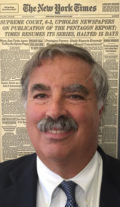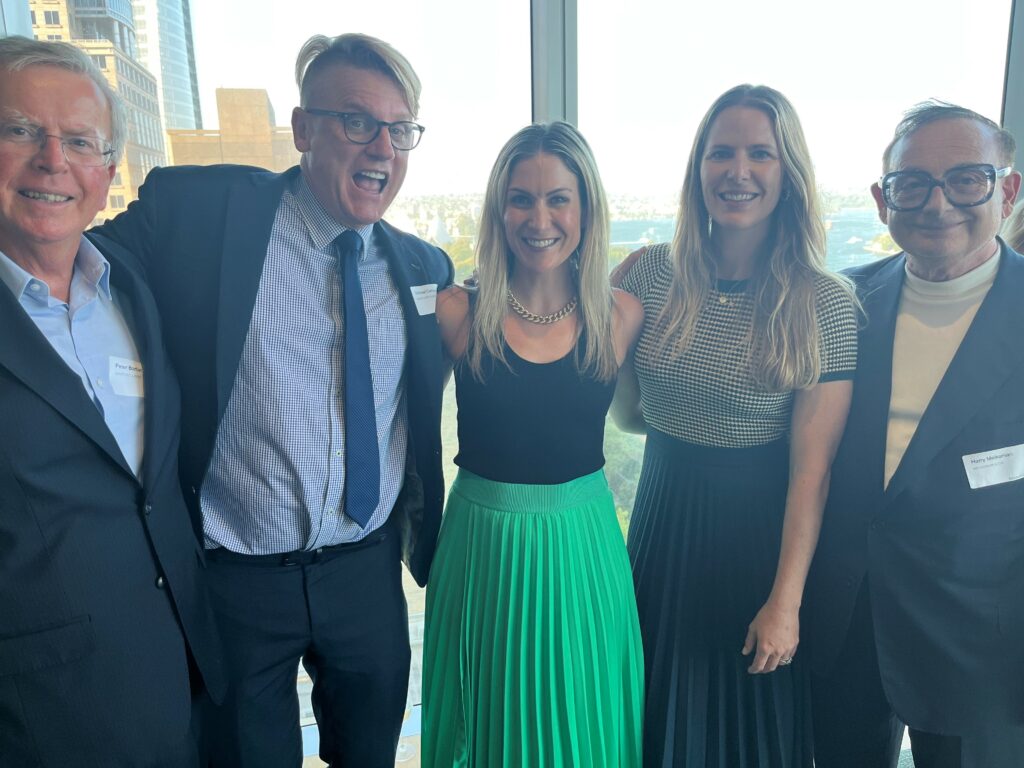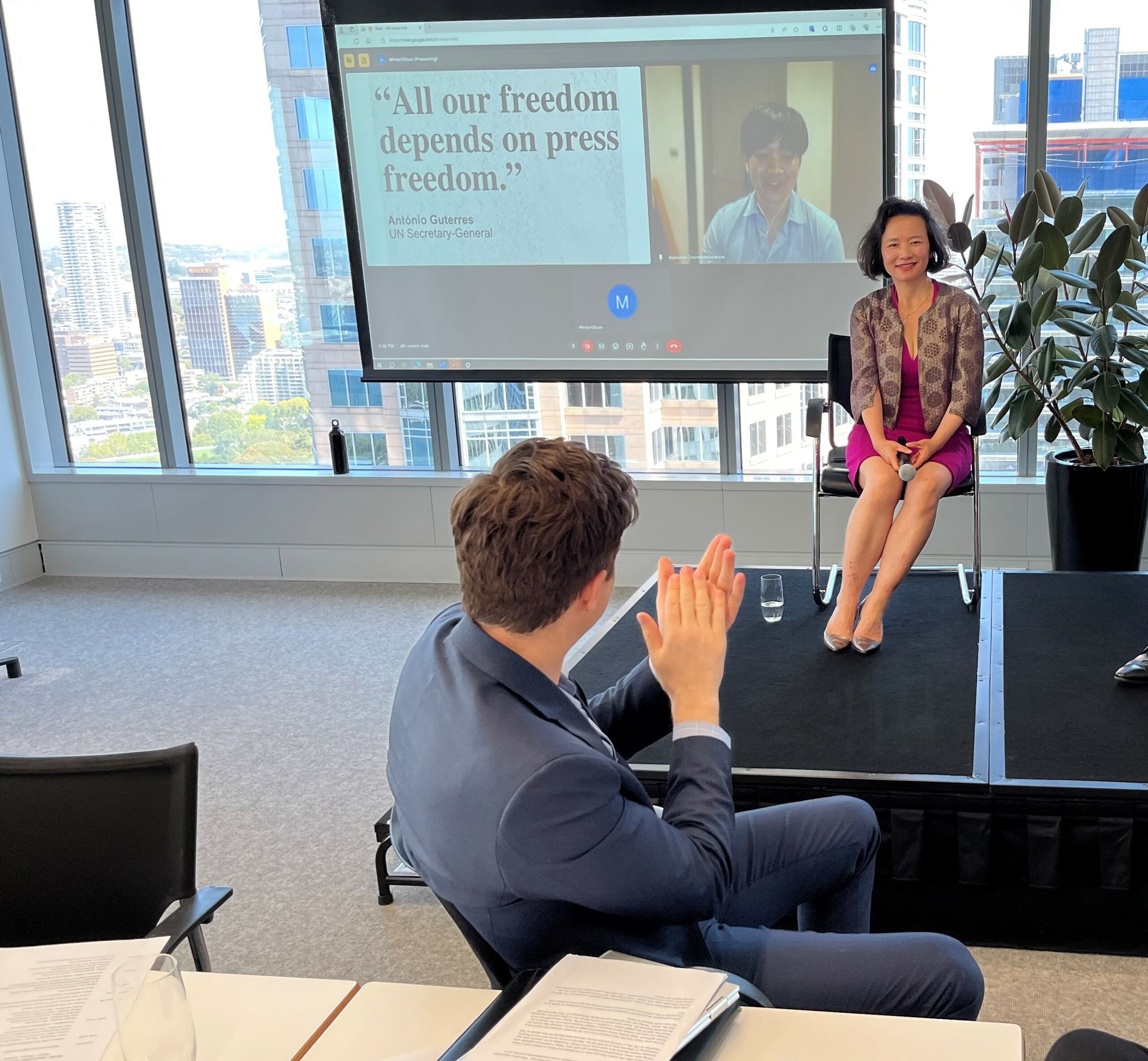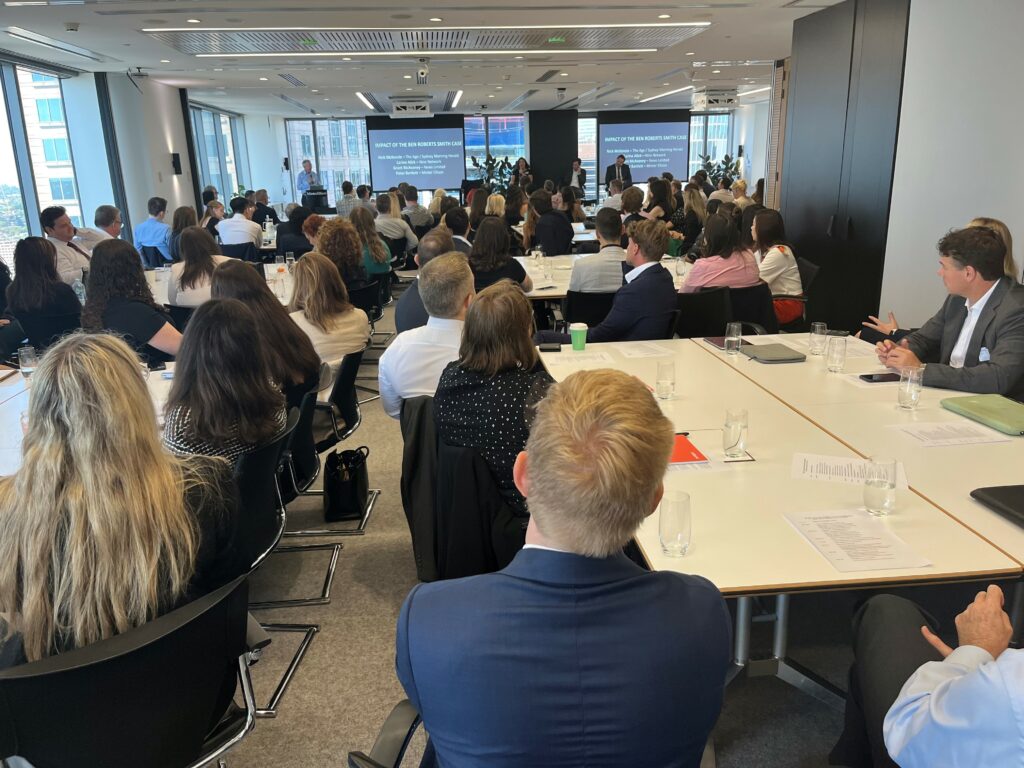Happy Slam, Happy Conference
The MLRC Ventures to Australia for the First Time


High atop the Tower Bridge above the River Thames, a day after the funeral of Queen Elizabeth at our last London Conference, I was accosted by a group of Australians. Why doesn’t the MLRC have a conference in Australia, they proposed. We’re at this conference in London, we understand you’ve had conferences for European media lawyers in Paris, Berlin and Amsterdam, why not in Sydney, they contended. I muttered that it was awfully far away, that historically the MLRC was not intended to cover the entire world, but I was unconvincing to both them and myself. Press rights are being limited, we have many ugly defamation cases, and we really need some backing and momentum in favor of free speech, they countered.
I noted the expenses associated with such a venture, and said I really didn’t know much about Australian media law so it would be hard for us to organize. Don’t worry, they urged. Peter Bartlett, the dean of Australian media law, volunteered his firm’s offices as a venue, and the group surrounding me offered to work on the planning and programming with us. It was impossible to resist, and so our Australian Conference was born.

Some 16 months later, last month, our first Australian conference took place. It was a smashing success. Most impressive, it gathered 125 media lawyers, almost all from Australia, far more registrants than at any of our non-London European meetings. It brought together most of the country’s media bar, a group that surprisingly doesn’t otherwise get together. And it featured six sessions, all of which were timely, interesting and starred engaging speakers. The only downside was that MLRC deputy director Dave Heller, who helped organize and plan much of the program, was not able to attend because of family matters.
In good Aussie fashion, the festivities started late afternoon with drinks at an elegant bar a few floors above Circular Quay, the hub of the Sydney ferry system, with a colorful and busy waterfront scene directly below us. It was organized by Planning Committee member Michael Cameron, who many might recall had a stint some years ago as inside counsel of The New York Post and had sometimes teamed up with us in battles and negotiations with the New York Police Department about press access.
Then we boarded a ferry on our way to the lovely home of one of our Planning Committee members Harry Melkonian, who along with his family very graciously hosted us to a wonderful buffet dinner. Though some members wanted to Uber back to our hotels, I convinced them to ferry back — the right decision as we boated past the iconic Sydney Opera House brilliantly lit.
The next morning the working part of the Conference began at the spacious offices of megafirm Minter Ellison in a conference room with scenic views of the bays and waterways surrounding Sydney. The opening session was moderated by its partner and Planning Committee member Peter Bartlett who had led the successful defense of the media in the Ben Roberts Smith case, Australia’s libel case of the century. Rather than replay the trial of military hero turned war criminal, Peter questioned the GC of the defendant Nine Network and the investigative journalist/ trial witness who had done much of the reporting. Taking that angle made for an enthralling hour.
The second program brought four leading Aussie investigative journalists to the stage. Moderator and Planning Committee member Marlia Saunders led a discussion setting forth the weaknesses of their country’s libel laws which they said had a chilling effect on their reporting, as well as how the fear of disruptive complaints and litigation weighed on them.
I led the next session, a prepub review of a hypothetical article from an Australian, UK and US point of view. Timely inasmuch as the Australian Tennis Open had just ended the day before, the article alleged that two Aussie players had thrown a match at the tournament, and then spent a disreputable night out thereafter. The exercise got many in the audience talking and taking various positions on the legal issues, which was a point of the exercise.
A fine lunch followed and as part of the lunch hour Harry Melkonian gave a talk about Trump and whether the courts will take him off the ballot. I was unclear whether my role was to be introducer, moderator, interrogator or rebuttor, but given that Harry had contended that Trump had not engaged in insurrection, I spiritedly took the other side. The crowd seemed to enjoy the debate.
After lunch Michael Cameron moderated a discussion about the persecution and prosecution of journalists in Asia. It featured Cheng Lei, an Australian tv news anchor and China correspondent who later, while working for a state-run Chinese tv network, was arrested on concocted state security charges. The audience was riveted as she discussed her three years of desolation in solitary confinement in a Chinese prison and her desperation in being separated from her children.

Our final session was led by Planning Committee member Marina Olsen who interviewed two Australian judges, one from federal court and one from New South Wales, about changes in the law, and their experiences and legal strategies in libel law. Some of the procedural niceties were lost on this American, but listening to two judges speak so openly was a treat for our audience, all of whom stayed to the bitter end.
After the last session, most of the audience walked a few blocks to the offices of Thomson Geer where Marlia hosted a champagne reception. With views high above the Opera House and tasty food as well, this reception, as the others, was as successful as the panels.
Mirroring our London Conference — this year’s will be on September 22-24 — the next morning featured a special meeting for in-house counsel only. About 25 strong attended at a lovely mini-theater of News Limited for a discussion of current issues led by its counsel Gina McWilliams. The concerns and positions voiced were little different from those expressed at similar inside counsel meetings in the US or UK: how to get greater access to police documents, how to block legislation which would recognize invasion of privacy law and so on.

Overall the Conference was found to be very worthwhile by our Australian colleagues. They enjoyed the bonding and social aspects and gained knowledge and nuance from the speakers and topics discussed. The conference also furthered our mission to help form a more cohesive community of media lawyers to strategize on defending a free press and the rights of journalists.
We left not with the same questions posed at that conversation on the Tower Bridge, but only with the issue of when and where we would hold our second Australian Conference.
George Freeman is executive director of MLRC. The views expressed are his and not those of the organization. Your responses are welcome at gfreeman@medialaw.org; they may be re-printed (with permission) in the following month’s LawLetter.